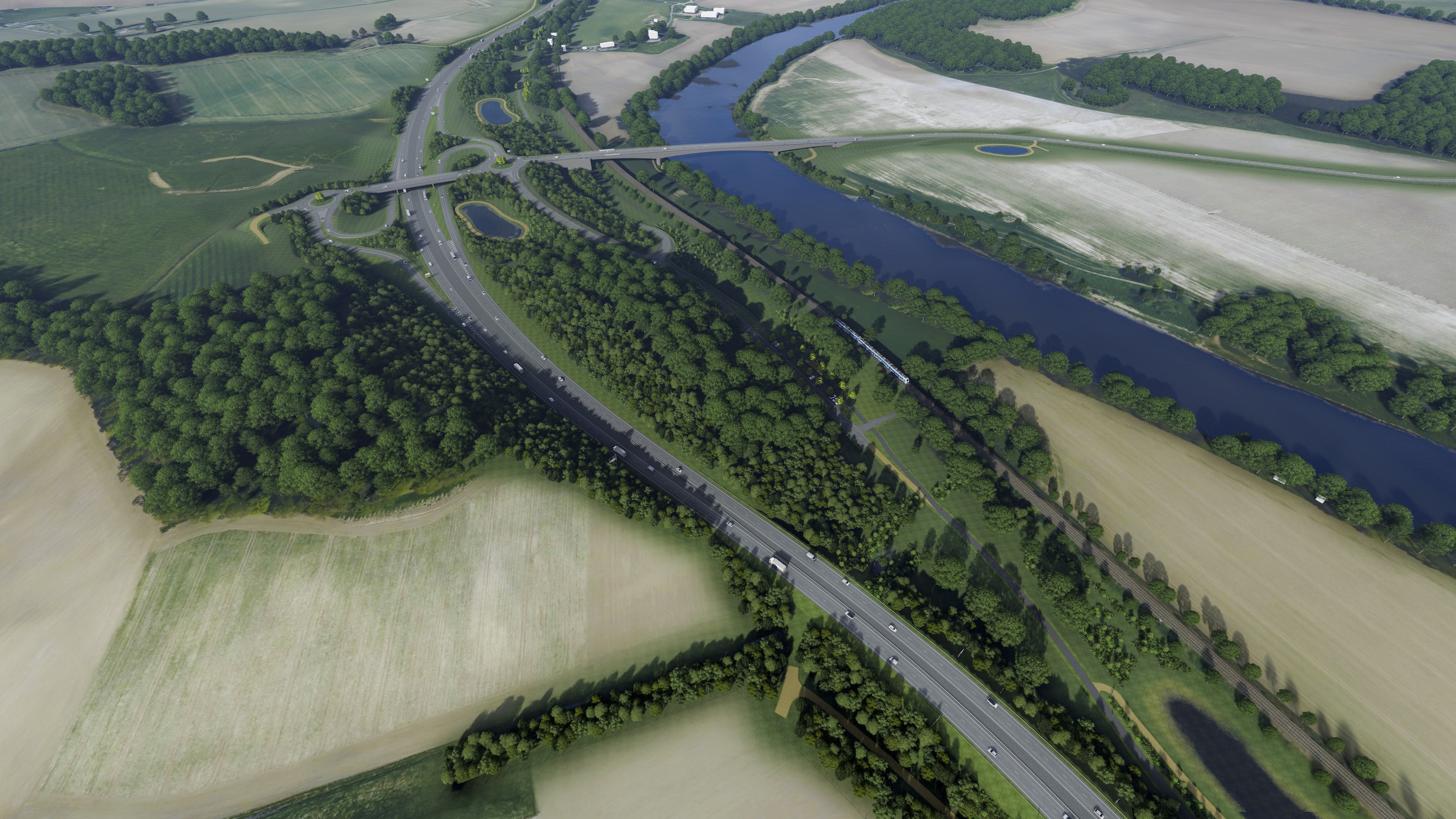Design changes save carbon emissions on Cross Tay Link Road project
Detailed design development and changes to construction methodologies has helped contractor BAM Nuttall (BAM) reduce carbon output on the Cross Tay Link Road project by over 35,000 tonnes.
This is the equivalent of taking more than 20,000* small cars off the road for a year.
BAM was contracted to reduce carbon by 30% of the baseline from the original design by client Perth & Kinross Council, but has managed to exceed this target by almost 35%. Further carbon reductions are expected to be realised during the construction phase of the project.
‘There is no way to undertake the construction of a complex major infrastructure project such as the Cross Tay Link Road without having significant carbon outputs, however with careful design and project management combined with smart project delivery we can make considerable carbon reductions,’ said BAM Nuttall, project director, William Diver.
The Cross Tay Link Road project involves the construction of a new 3-span bridge over the River Tay and six kilometres of new road linking the A9 and the A93 to Blairgowrie and the A94 north of Scone. It also includes the realignment of two kilometres of dual carriageway on the A9 just north of Inveralmond Roundabout.
The new road will significantly reduce traffic congestion and related pollution in Perth City centre while opening up active travel opportunities and will give access to areas around the city for sustainable development.
To help keep carbon emissions to a minimum, the project has been carefully designed to recycle every tonne of earth that needs to be moved during construction. Earth materials from excavations are moved to form other features, for example road embankments needed in the overall design. By keeping all earthworks movements within the site boundary, the contractor has significantly reduced construction traffic being added to the local road network.
This, along with changes to road pavements, footways/cycleways and road drainage by using more sustainable solutions and the use of lower carbon materials along with design changes to the bridge structures all helped BAM surpass its carbon reduction targets.
‘Simple steps like using modern plant with low fuel consumption, GPS enabled plant and sustainable material selection and sourcing locally all contributed towards the lowering of the carbon footprint of the project. This is just the start of the construction phase, so we will be refining and improving the way we work to deliver even more carbon reductions as the project develops,’ added William.
The Cross Tay Link Road is the largest infrastructure project Perth and Kinross Council have ever undertaken.
‘Reducing carbon output is a key deliverable for the project when it is complete asit will act as an enabler to help shift traffic out of the city centre and promote active travel options. We are pleased with the progress BAM is making in putting carbon reduction as a central theme during the detailed design and construction phase of the project,’ said Perth & Kinross Council’s, Roads Infrastructure Manager, Jillian Ferguson.
The project’s approach to carbon saving is being used as best practice by the Scottish Government
The Cross Tay Link Road is due to open in early 2025.
ends
Pictures shows: (Picture of machinery at work) During the early earthworks phase of the Cross Tay Link Road project, main contractor BAM Nuttall has saved 35,000 tonnes of carbon from original design estimates.
Notes to editors
*Calculation based on statistics from the Department of Transport

